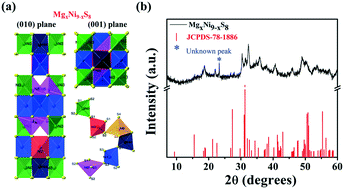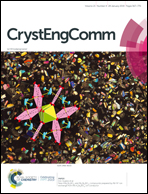Electrochemical sensing of free radical antioxidant diphenylamine cations (DPAH˙+) with carbon interlaced nanoflake-assembled MgxNi9−xS8 microspheres†
Abstract
The detection and control of free radical antioxidant diphenylamine cations (DPAH˙+), a typical organic industrial waste water byproduct, is important for environmental safety and protection. Diphenylamine (DPA) causes severe blood cell damage when it is in contact with living organisms. In this study, we have developed a highly sensitive electrochemical sensor with carbon interlaced nanoflake-assembled MgxNi9−xS8 microspheres for the detection of diphenylamine. This hybrid electrocatalyst MgxNi9−xS8@C material was prepared using a solvothermal co-precipitation method. The microstructural features and elemental composition of the carbon supported MgxNi9−xS8 microspheres were examined by powder X-ray diffraction (PXRD), scanning electron microscopy (SEM), transmission electron microscopy (TEM), energy dispersive X-ray spectral mapping analysis, and X-ray photoelectron spectroscopy (XPS). The electrochemical performance of the carbon supported MgxNi9−xS8 microspheres was investigated by cyclic voltammetry (CV) and difference pulse voltammetry (DPV). The carbon supported MgxNi9−xS8 microspheres exhibit good selectivity, a low detection limit of 16 nM, and wide linear range from 0.1 to 76 μM. This study offers the best platform upon which to explore metal sulfide–carbon matrix microstructures in industrial waste-water treatment as a potential sensing protocol for the detection of DPAH˙+.



 Please wait while we load your content...
Please wait while we load your content...